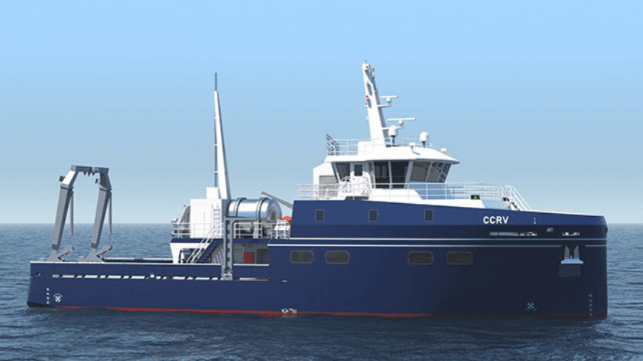Scripps Picks Designer for One-of-a-Kind Hydrogen Hybrid Research Ship

UC San Diego’s Scripps Institution of Oceanography has picked Glosten to design a unique green-fuel powered research vessel. The new vessel will have a first-of-its-kind hydrogen-hybrid propulsion system.
Scripps and Glosten have a history dating back more than 60 years, when Glosten provided the unique design of Scripps' Floating Instrument Platform, the curious vessel also known as FLIP. Glosten was also involved in the midlife refit of RV Roger Revelle, Scripps' largest ship.
"Fundamentally, our ships have to be reliable and capable in order to support the innovative research our scientists conduct at sea. On top of that, the ship we envision needs to demonstrate that zero-emission power systems work effectively under demanding real-world conditions," said Bruce Appelgate, associate director and head of ship operations at Scripps Oceanography. "It's the job of the naval architect to provide the necessary engineering, design, and integration skills needed for this project to succeed on every level."
A feasibility study on the hydrogen fuel-cell propulsion technology for the vessel was completed in 2020 by Sandia National Laboratories, Glosten and Scripps, with funding from MARAD. California's state legislature allocated $35 million for the design and construction last summer.
When completed, the vessel will support research in California's waters, covering marine fisheries, algal blooms, El Niño storm patterns, atmospheric rivers, ocean acidification and other topics of regional concern. The new vessel will also carry up to 45 students and teachers at a time on day trips for at-sea instruction. It will replace the research vessel RV Robert Gordon Sproul, which has been in operation for four decades and is nearing the end of its useful life.

that matters most
Get the latest maritime news delivered to your inbox daily.
The new vessel will feature a hybrid propulsion system that integrates hydrogen fuel cells with a conventional diesel-electric power plant, enabling zero-emission operations. The design is scaled so the ship will be able to operate 75 percent of its missions entirely using hydrogen. For longer missions, extra power will be provided by diesel generators.
As a research vessel, it will also have advanced lab space and a suite of instrumentation, including acoustic Doppler current profilers, seafloor mapping systems and fishery imaging systems.
